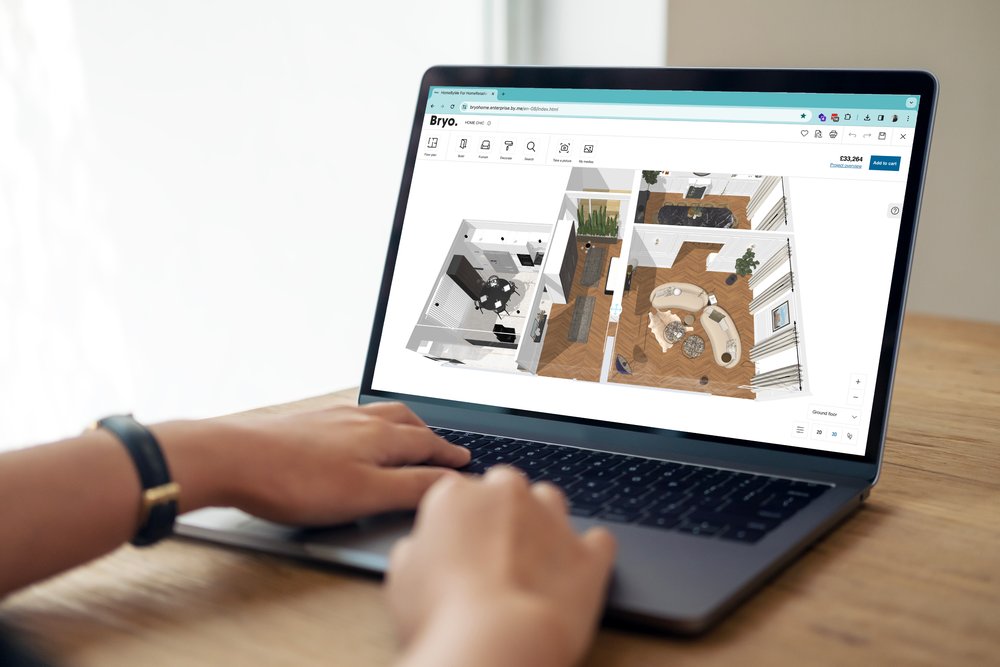Creating buy-in for furniture retail digital transformation at all levels of your business
Digital transformation is essential for success in today’s furniture industry.
Consumers are the reason: They are already taking up new technologies, like artificial intelligence (AI) and augmented reality (AR), and demanding personalized omnichannel experiences.
But successful digital transformation is more than just the integration of new technologies. It’s a new way of working, making decisions, and managing sales that is underpinned by data analysis. And it impacts your business at every level, from customer experience, to product innovation, to business operations. This means that it requires buy-in throughout your entire organization – through a culture that embraces innovation and strives to be agile.
In this article, we will detail how you can achieve this buy-in.
But first, here’s a quick overview of the types of technology involved in digital transformation in furniture retail:
- Product configurators: Allow customers to view your products online and tailor them to their individual tastes easily by changing the color, material, or size.
- 3D room planners: Enable personalization, customization, and high-quality renders of complete room renovations.
- Augmented reality software: Let consumers visualize the furniture in their home, delivering a memorable experience.
These solutions seamlessly connect to back-office functionality, resulting in smooth end-to-end business operations.

How to generate enthusiasm in your sales teams
Sales teams are on the frontline of customer interactions. This makes getting their buy-in critical to the success of digital transformation efforts.
To demonstrate how digital initiatives will enhance their capabilities and drive sales, your sales representatives need to know:
- The same digital solutions customers use on your website can be used in your stores. Consumers can transition seamlessly between the two and sales staff can access their existing projects quickly. This facilitates collaboration between your customers and sales teams, streamlines tasks for on-floor staff, and brings in more consumers for personalized advice. They provide the omnichannel journey that customers demand today.
- Visualization technologies such as Augmented Reality (AR) can create immersive experiences for customers – they provide the ‘wow’ factor. This leads to greater engagement, higher conversion rates, repeat business, and increases in basket size.
- Advanced solutions connect to back-office functionality for smooth end-to-end sales processing, saving sales staff time and making customer interactions easier.
By showcasing the potential of digital tools to streamline sales processes and deliver personalized experiences, you can ignite enthusiasm among sales staff. Rather than replacing human relationships, digital technologies will enhance sales interactions, bring in more qualified leads, and accelerate and increase in-store conversions.
For sales staff to adopt new technologies, you need to equip them with the necessary skills, knowledge, and understanding to thrive in this new ecosystem – and ensure the solutions you choose are easy to use and aligned with the goals of all users (your customers and sales representatives).
Provide comprehensive training that allows reps to appreciate the digital philosophy fully, onboards them to each piece of technology, and shows them the benefits of using it clearly. This will position them to adapt to digital transformation initiatives with enthusiasm.
Read our article for tips on how you can train staff to use new solutions.

How to create a buzz within IT teams
IT personnel need to be involved at the inception stage of your transformation journey. They are the ones who can help your transformation partners ensure the successful implementation, integration, and use of new digital solutions across your business.
By doing this, you can proactively address potential challenges and demonstrate how these solutions align with your organization’s goals. This will streamline the adoption process.
The most advanced digital tools are intuitive, scalable, customizable, and compatible with existing systems. This means quick implementation, limited disruption of day-to-day operations for IT staff, and optimized future workflows.
Bringing in IT staff early in the process will also help ensure ownership over the process from members of the team. With them as key stakeholders in the digital transformation process, you can leverage their expertise, ensure they are able to collaborate with other teams, and drive successful outcomes.
Get more information to share with your IT teams here.
How to get your back-office staff passionate about digital transformation
Back-office staff in the furniture retail business will want to know the tangible benefits that digitalization brings to the business and their daily operations.
For example, how can digital workflows optimize order management, fulfillment, and delivery processes? What is the potential for increased efficiency and fewer errors?
With data produced by digitalized workflows, the order journey is clearly traceable from end to end. This leads to faster service delivery, lower costs, and optimized inventory management.
The data that is produced also enables the introduction of the latest manufacturing processes and facilities, unlocking the production of personalized furniture on demand, aligning with customer preferences, and driving enhanced customer experiences.
These advantages not only help demonstrate the value of digital transformation to back-office staff but also underscore its potential to revolutionize traditional processes and elevate overall business performance.

Conclusion
The right digital initiatives enhance customer experiences, drive sales, integrate seamlessly with existing technologies, streamline back-office processes, and facilitate product innovation. This means they unlock new, sustainable revenue streams and make everyone’s job easier.
Digital transformation isn't just a means of staying competitive — it's a strategic imperative for driving growth in the furniture retail industry.
Explaining this to all stakeholders, showing evidence, and providing training to make integration pain-free will ensure they understand their importance and create buy-in.
Get more insights from our brand-new eBook
We’ve brought together the answers to the ten most important questions furniture retailers have about digital transformation to help you with the whole process.
Let's start your digital transformation journey together and open new opportunities for growth and innovation.
Get your eBook now
A furniture retailer’s guide to omnichannel selling
